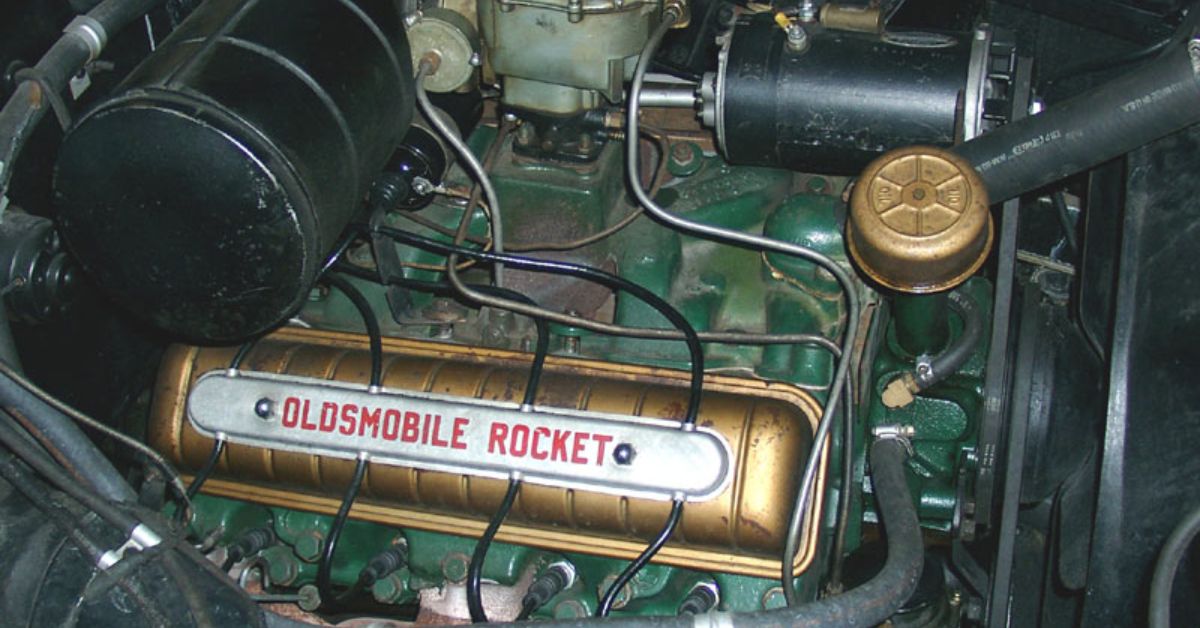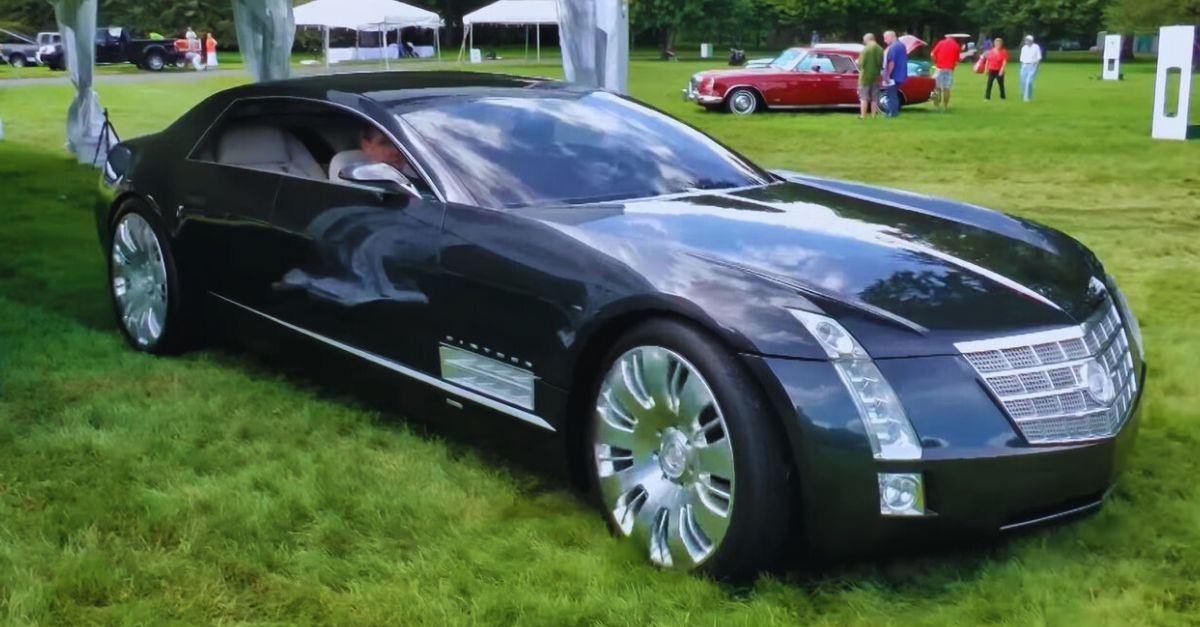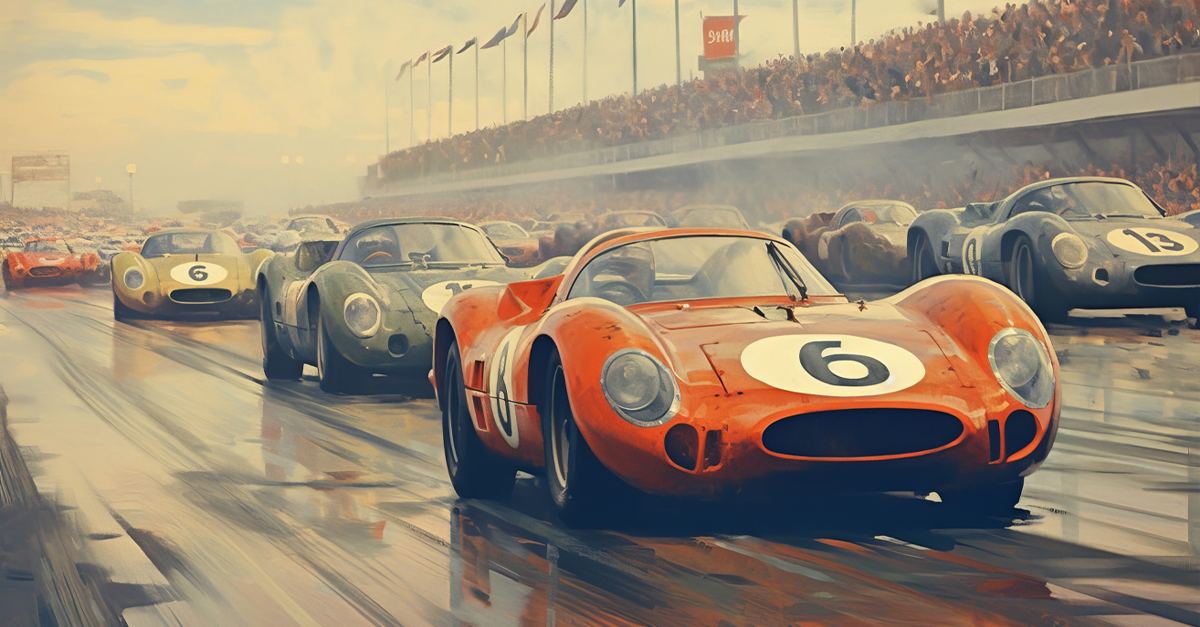What, How, And Why
When you hear an engine called “The Killer”, there must be a good reason. Well, here is the full story of what, how, and why General Motors named their powerful V8 engine so.

Experimental Powerhouse
Deep in the heart of Detroit's industrial jungle, the W-43 emerged as General Motors's ambitious experiment in power. Its massive V8 block roared with untamed horses; chrome valve covers gleamed under fluorescent lights while engineers whispered about its revolutionary combustion design. It was based on the Oldsmobile 455-CID V8 engine.
 Mr.choppers, CC BY-SA 3.0, Wikimedia Commons
Mr.choppers, CC BY-SA 3.0, Wikimedia Commons
The Unmatched Strength Of The W-43
Innovation rarely comes without risk, and the experimental W-43 was one daring approach. Designed in the late 1960s, this V8 engine carried 7.5 liters of displacement and gave approximately 500-600 horsepower. That’s power enough to outmuscle most sports cars. Engineers dreamed of dominating racetracks with this one, for sure.
What About The Torque?
The toque was around 540 lb-ft. Such capabilities provide a car with exceptional acceleration and towing capacity. To show you just how advanced this advancement was, we have such high torques in several high-performance vehicles going above 600 lb-ft of torque today.
What Makes The W-43 Engine Special
Chevrolet, Pontiac, and Oldsmobile innovated in the 1960s, but their groundbreaking design set these engines apart. While Chevy toyed with overhead-cam technology and Pontiac refined its Ram Air cylinder heads, Oldsmobile went all in on experimental engineering.
The Engine’s Dream Team
The team—possibly including visionaries like Lloyd Gill and John Beltz—deeply explored a pent-roof chamber-style design, a revolutionary 32-valve V8, and even a unique four-valve arrangement. These ambitious concepts were the brand’s pursuit of high-performance innovation. Such bold steps are vital in innovation.
 Exhilaration157 at English Wikipedia, Wikimedia Commons
Exhilaration157 at English Wikipedia, Wikimedia Commons
It Had A Futuristic Configuration
This advanced design allowed unparalleled control over valve timing. The result? Peak efficiency and staggering performance. For the late 1960s, this was space-age technology reserved for experimental projects. But such innovation didn’t come cheap. The intricate camshaft arrangement increased production complexity, and this made mass production a logistical nightmare.
 1949 Ford F-3 with Lincoln 32 Valve Intech DOHC 4.6 V8 by Bronco McBane Measuremation
1949 Ford F-3 with Lincoln 32 Valve Intech DOHC 4.6 V8 by Bronco McBane Measuremation
So, It Remained Just A Dream
Despite its jaw-dropping specs, the W-43 remained a prototype due to high production costs and shifting market demands. This is also because General Motors's focus soon shifted to fuel economy and emissions. This beast remained an unrealized legend. Regardless, we can still explore a dream, right? So let’s do that.
It Shook The Room With Raw Power
Early testing revealed an engine so powerful it reportedly shook the testing equipment. That’s no exaggeration—this V8 was a true force of nature. But, such raw power came with challenges like overheating and excessive vibrations, which made prolonged testing risky. However, these dramatic trials only added to the engine’s mystique.
Was It Fuel-Efficient?
Short answer: Somehow. Unlike today, fuel efficiency in the 1960s wasn’t a concern. Still, General Motors designed the W-43 to optimize high-octane gasoline as a necessity for performance. High-octane fuel enhanced combustion, delivering cleaner, more consistent performance—a vital factor in maximizing the engine’s mammoth output.
But Something Happened
Sadly, the oil crisis of the 1970s shifted automotive priorities, and this left high-octane engines like the W-43 without a market. Sometimes, the future arrives too early, and in the automotive industry, these early failures show you what needs to be changed, although that takes time.
 The 1970s Oil Crisis — Could It Happen Again? by Pump The Movie
The 1970s Oil Crisis — Could It Happen Again? by Pump The Movie
It Became An Engine Without A Car
As expected, with the challenges already experienced, the W-43 never found a production car to call home. But just for a moment, imagine a Chevelle equipped with this beastly V8—it would’ve redefined muscle car history—instead, the engine languished in General Motors’s archives, a solution without a problem to solve.
It Became A Beast That Never Hit The Streets
Why? General Motors couldn’t justify the cost of building a vehicle capable of handling the W-43’s immense power. The absence of a compatible platform turned this engineering marvel into a bittersweet footnote. People who knew were just left to dream of what might have been.
 Unbekannte Autoren und Grafiker; Scan vom EDHAC e.V, Wikimedia Commons
Unbekannte Autoren und Grafiker; Scan vom EDHAC e.V, Wikimedia Commons
General Motors Pulls The Plug
In the early 1970s, Oldsmobile made the difficult decision to pull the plug on the W-43 despite its groundbreaking potential. The engine’s innovative design and engineering promised incredible performance, but reality had other plans. As a result, the W-43 prototype was shelved. Oldsmobile shifted focus to more conventional engine designs.
The Myth Of Mass Production
Once a prototype makes it to mass production, you know it has made it. But that wasn’t the case with “The Killer”. Instead, the W-43 was destined to remain an enigma, and even with its advanced components and design, production costs were astronomical at the time. It just did not make sense.
The End Of The W-43 Dream
By 1973, the project was officially abandoned, and the W-43 became one of the great "what could have been" stories in automotive history. This creation never saw mass production lines or got a vehicle to call home. It moved from idea to prototype to shelf.
Limited Public Awareness
Suppose you are wondering how General Motors was able to keep this info under wraps: The W-43 might have been the loudest secret General Motors ever kept. Despite its awe-inspiring capabilities, this engine was known only to insiders and select engineers—never displayed at auto shows or featured anywhere.
 Historic American Buildings Survey, Wikimedia Commons
Historic American Buildings Survey, Wikimedia Commons
Ties To Racing Legends
Another thing most don’t realize is that the W-43 was also to dub its feet into racing, potentially changing it for eternity. General Motors reportedly had collaborated with top engineers and racing teams to see if this engine would fit the racing world.
It Was Never Confirmed, Though
Though never officially confirmed, rumors suggest that prototypes were tested on tracks under strict secrecy. These collaborations point to W-43’s racing DNA, even if it never competed formally. The engine’s unfulfilled potential leaves enthusiasts imagining the racing triumph it could have achieved.
There Are Just A Few Prototypes Available
A few things excite collectors more than limited editions, and the W-43 is as rare as they come. Only a few prototypes were ever built. One of the few was found by twin brothers James and John Kryta. But the pair had zero ideas, so here is what they did.
They found Help
If you have no idea how something works, you consult the manual. The manual was an anonymous ex-Oldsmobile engineer, a renowned restoration expert, Scott Tiemann, and Ed Koerner (former vice president of General Motors North America). The team debuted a running engine at the 2024 Detroit Autorama.
 Steve Shook from Moscow, Idaho, USA, CC BY 2.0, Wikimedia Commons
Steve Shook from Moscow, Idaho, USA, CC BY 2.0, Wikimedia Commons
As Of Today, Prototype 1 Is Now In A Car
The W-43 engine is now housed within a 1970 Oldsmobile 442, owned by James Kryta, who rescued the car outside in Indiana, missing its engine. Over five years, Kryta’s team dedicated around 3,000 hours (equivalent to 125 days of non-stop work) to bring this car back to life.
 Sicnag, CC BY 2.0, Wikimedia Commons
Sicnag, CC BY 2.0, Wikimedia Commons
It Could Possibly Run
Equipped with the mighty W-43, the 442 is now paired with a wide-ratio four-speed manual transmission and a 3.91 aluminum W-27 differential. Its Sebring Yellow exterior gleams, now accented with red stripes instead of the original black ones—though red stripes were available then, making this an authentic, period-correct revival.
This Success Didn’t Come Easy
The journey to revive the W-43 prototype was met with its fair share of bottlenecks. Bottleneck number one was that the engine was far from complete. Most parts, like the cylinder head, valvetrain, intake manifold, and exhaust manifolds, were missing. No engine would work without these parts.
Bottleneck Number 2: Expertise Is Hard To Come By
Another issue that made this project take longer was that expertise was initially scarce. "It wouldn’t have happened without Ed’s input", says James Kryta. "I didn’t even know where to start with some of the missing pieces, and he helped steer the project in the right direction".
 Joe Mondello talks about the Olds 442 by Greg Welsch
Joe Mondello talks about the Olds 442 by Greg Welsch
Bottleneck 3: Parts Were Had To Find
Thanks to Ed’s expertise, new cylinder heads, intake and exhaust manifolds, and valve covers were cast to complete the engine. Additional parts, including the oil pan and timing cover, were carryovers from Oldsmobile's production models. This combination of original, newly cast, and 3D-printed components took time. More changes ensued.
 Joe Mondello talks about the Olds 442 by Greg Welsch
Joe Mondello talks about the Olds 442 by Greg Welsch
Addressing Known Design Issues
The best thing about reviving the W-43 is that the engineers now have a road map of what did not work before. So, this time, the engineers focused on enhancing areas that could have hindered performance. These updates were key to making the engine functional and ready for modern standards.
They Revamped The Rocker Arm System
Change number one was switching the rocker arms’ shaft-mounting system, which happened to be one of the weak points in the original design. This was reworked entirely. Then, a new girdle was added, along with other changes to significantly improve valvetrain stability. This modification helped the handling of higher revs.
 Rios, CC BY-SA 4.0, Wikimedia Commons
Rios, CC BY-SA 4.0, Wikimedia Commons
Next Change: Strengthening The Rotating Assembly
The rotating assembly saw critical improvements, too, including the addition of higher-compression forged pistons, lighter connecting rods, and a stronger, lighter crankshaft. These changes were instrumental in enabling the engine to handle more power and work more efficiently. This boosted both performance and durability.
 Joe Mondello talks about the Olds 442 by Greg Welsch
Joe Mondello talks about the Olds 442 by Greg Welsch
The Camshaft Overhaul Also Saw A Makeover
The most significant change came to the camshaft. The original hydraulic flat-tappet-type camshaft was switched with a mechanical roller. This adjustment was significant because the engine performed more smoothly and efficiently while revving more freely. Think of the camshaft’s new grind as the W-43’s new set of lungs.
 Flat Tappet Camshaft Failures: Causes and Solutions by Project Heaven - Classic Car Restoration
Flat Tappet Camshaft Failures: Causes and Solutions by Project Heaven - Classic Car Restoration
Refining The Camshaft’s Grind
The camshaft's grind was perfectly refined when the team worked with Scott Tiemann and Charlie Westcott of Militia Racing Products. “We called in Charlie Westcott, and he nailed the new grind perfectly”, comments Tiemann. This was a game-changer for revving freely while maintaining a smooth idle and good brake vacuum.
The Improved Valvetrain And Idle Quality
As we've said, the new camshaft grind was a new set of lungs because they improved the engine’s idle quality, which now had a characteristic sound similar to the famed W-30. With reduced overlap and better valve timing, the updated engine idles smoothly and even provides an excellent vacuum for the braking system.
 Sicnag, CC BY 2.0, Wikimedia Commons
Sicnag, CC BY 2.0, Wikimedia Commons
Achieving A Better Lobe Separation Angle
Another change was that the lobe separation angle was increased to enhance the overall performance of the camshaft. This change gave the driver using this engine better drivability. There was also a significant boost in overall power delivery, which the original design fell short of.
A New Beginning
Finally, after the hustle and bustle of replacing everything, the engine finally came to life on the first try. Boy, were they all excited. This wasn’t a mission to improve the engine but to give it a new lease of life. Mission accomplished.
Getting Back To Dyno Testing
After all the sweat and grease had gone into the project, the engine was complete, and it was time for dyno testing. The results were nothing short of impressive. Over five decades later, idle, the newly resurrected W-43 engine immediately produced numbers similar to those from its first dyno tests.
A High-Revving, Reliable Masterpiece
The final result? An engine that sounds incredible and revs with ease, with reliability and performance metrics soaring high. With modern updates, the W-43’s potential was fully realized. Now, we just sit and wait for engineers to do their magic with this high-revving, powerful, and reliable masterpiece that pays tribute to its historic design while embracing the future.
Resurrected Power Thanks To Modern Technology
When the engineers saw that the dyno results matched up, they had to be grateful for modern technology. Without this tech, the chances of getting all the design changes right and getting a roaring engine were slim. As of 2024, the W-43 has been ready to live up to its legendary status in performance.
Where Is the Other Prototype?
Where did the other few go? Well, what is known is that one was sent to Petersen Publishing in Los Angeles at the close of the development program. This partial engine, used for valvetrain stability tests, was photographed for articles in Car Craft and Hot Rod.
It Was An Extra Cost Oldsmobile Didn’t Want To Foot
Oldsmobile reportedly didn’t want to foot the shipping bill to take it back to Michigan and planned to dispose of the engine. However, the parts never made it to the trash and remained hidden for years, leaving car enthusiasts to wonder about their whereabouts. Thankfully, we know where one is.
 Criticalthinker at English Wikipedia, Wikimedia Commons
Criticalthinker at English Wikipedia, Wikimedia Commons
The Ripple Effect On Modern Engines
The W-43’s influence was felt. Its advanced features inspired subsequent V8 designs, from improved camshaft systems to better cooling solutions. The engine set a benchmark for what was possible in high-performance engineering. It's likely that every roaring V8 on today’s roads carries a piece of the W-43’s DNA.
 Mick from England, CC BY 2.0, Wikimedia Commons
Mick from England, CC BY 2.0, Wikimedia Commons
Where Did “The Killer” Nickname Come From
Nicknames often reveal deeper truths, and “The Killer” was evident. This engine’s raw power and the awe it inspired during testing were beyond comprehension. It wasn’t just a catchy name—it personified the potential of a machine designed to dominate. The name probably came from the engineering team working on it.
 ULTIMATE OLDSMOBILE W30 W43 PROTOTYPE 455 32 Valve in 1970 442 CUTLASS at Autorama Not Hemi HI-PER
ULTIMATE OLDSMOBILE W30 W43 PROTOTYPE 455 32 Valve in 1970 442 CUTLASS at Autorama Not Hemi HI-PER
The Other Side Of The Name Card
The nickname also hinted at its challenges. Overheating, vibrations, and production woes turned this powerful beast into an unattainable dream back in the late 60s. The good news is that with today’s technology, as done by the brothers, prototypes can be given a new lease of life.
 ULTIMATE OLDSMOBILE W30 W43 PROTOTYPE 455 32 Valve in 1970 442 CUTLASS at Autorama Not Hemi HI-PER
ULTIMATE OLDSMOBILE W30 W43 PROTOTYPE 455 32 Valve in 1970 442 CUTLASS at Autorama Not Hemi HI-PER
It Is Any Collector’s And Engineer’s Obsession
For collectors and engineers alike, the W-43 has to be the ultimate prize. Its rarity, innovation, and mystique could have made it a highly sought-after artifact. Spotting one is like finding a unicorn. Owning one? That’s a privilege few can claim.
Forgotten By Many, Worshipped By Few
You cannot deny that what General Motors did was out of this world. However, reality had other plans. Still, for dedicated enthusiasts, it remains an icon—a story passed down through whispers and awe. This dual legacy of a loss turning into a recent win only deepens its intrigue.
 ™/®General Motors Company, Wikimedia Commons
™/®General Motors Company, Wikimedia Commons
Competing With Today’s Performance Engines
The resurrected W-43 engine throws many engines out of the ranking because it holds its own against modern performance powerplants. Its improved capabilities rival the output and responsiveness of contemporary high-performance V8s like the Chevrolet LS7 or the Dodge Hellcat HEMI. Impressive, right?
 Mtyson84, CC BY-SA 4.0, Wikimedia Commons
Mtyson84, CC BY-SA 4.0, Wikimedia Commons































